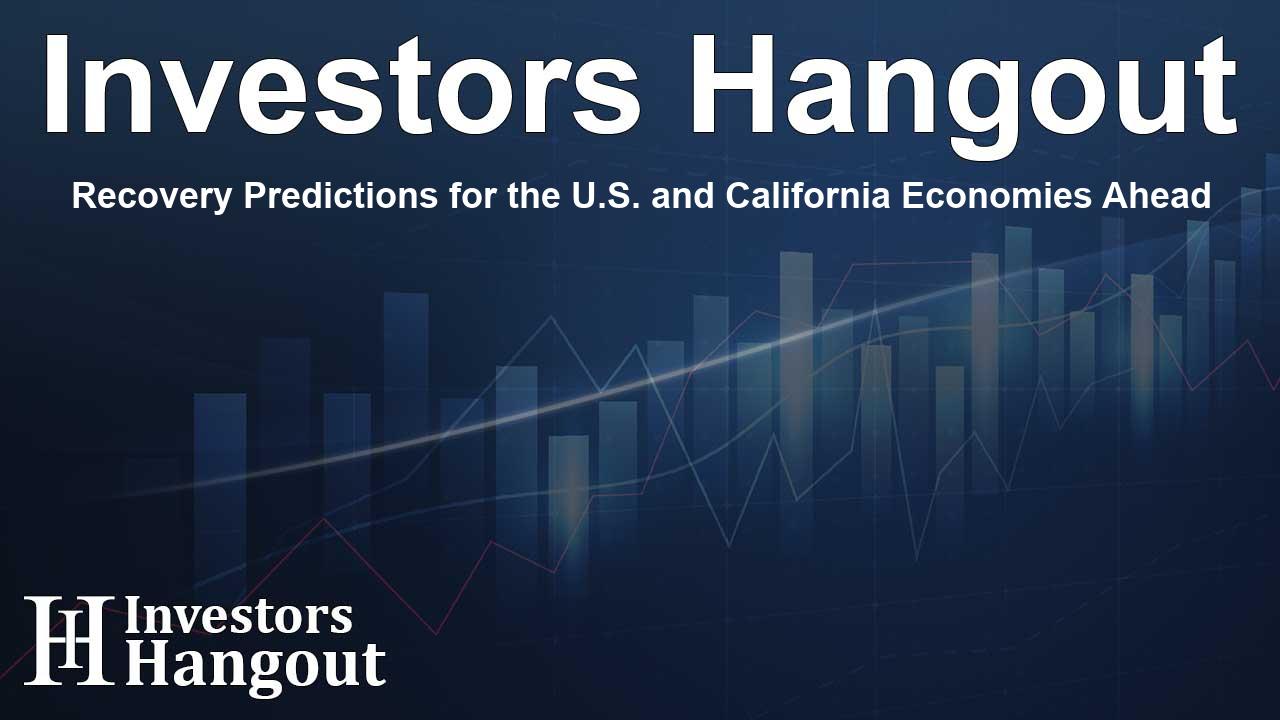Recovery Predictions for the U.S. and California Economies Ahead

Predictions for U.S. Economic Recovery
The UCLA Anderson Forecast provides compelling insights into the challenges facing the U.S. economy as it navigates a complex landscape of recovery. Recent reports indicate that the risk of increased layoffs could trigger an economic downturn, making vigilance essential.
Current Economic Landscape
In mid-2025, various economic factors have pointed to tumultuous times. A notable decline in payroll employment was reported in June, alongside a worrying increase in inflation. Federal Reserve Chairman Jerome Powell's recent monetary policy shift, commonly referred to as the "Powell Pivot," has sparked renewed discussions about employment priorities overshadowing inflation concerns.
This atmospheric shift aligns with expectations that the U.S. economy will see recovery begin to take shape in mid-2026, potentially achieving growth rates around 2% by the end of that year – a notably optimistic outlook compared to earlier estimates. In contrast, California's recovery timeline is anticipated to extend into late 2026, with a slightly quicker rebound expected in 2027.
Challenges Ahead for California
The outlook for California remains stark, with signs suggesting a prolonged employment contraction persisting through 2025. Employment data collected indicates a significant slowdown, leaving key sectors such as technology, durable goods manufacturing, and entertainment grappling with a lack of momentum. This stagnation has resulted in job losses, compounded by an unemployment rate climbing above 5%.
Notably, projections suggest that the dominance of California's economy could return once the effects of current pressures subside. By late 2026, sectors such as technology and construction are expected to thrive, reinstating the state’s superior growth trajectory moving into 2027.
Labor Market Dynamics
The national labor market currently presents a mixed bag. Despite maintaining low unemployment claims at approximately 1.92 million, the broader indicators show signs of distress. The recent uptick in unemployment to 4.3% is tempered by its historic context, yet veil a deeper contraction in the labor market. The declining labor supply among the working-age population, alongside ongoing restrictive immigration policies, adds layers of complexity to the recovery narrative.
Economists remain cautious about recent non-farm payrolls reflecting potential recessionary signals, echoing the implications of limited job growth concentrated within select industries. Through 2025, expectations posit a gradual deterioration of the labor market, with a peaking unemployment rate targeting 4.6% early in 2026.
Inflation and Consumer Expenditure Outlook
The inflationary landscape is evolving, with April and August witnessing marked increases in CPI rates, now hovering around 4.8%. As service costs rise significantly, sparked by escalating demand in non-shelter services, concerns about continued inflation are rife.
Forecast estimates predict GDP growth at around 1.0% SAAR for the third quarter, reflecting the complexities of consumer expenditures and the resulting dynamics of fiscal stimulus. The overall economic landscape remains fragile, with expectations of subdued growth emerging as tariffs come into full effect by winter.
Long-Term Forecast for Economic Health
Looking ahead, California's economy is striving to regain its historical growth advantage over the national economy, necessitating a robust revival in sectors such as durable goods manufacturing and technology. The forecast suggests various sectors will witness job recovery, particularly with aerospace and space exploration gaining traction.
Even so, external factors, including governmental policies around labor and immigration, will significantly influence the employment landscape, especially in food processing and agriculture sectors. Observations over the past three months confirm California has lagged behind the national growth rate, necessitating focused strategies for robust recovery.
Conclusion: The Road Ahead
The upcoming years hold substantial significance for both the U.S. and California economies. The anticipation of gradual recovery provides hope but is laden with headwinds that will require strategic navigation by policymakers and key stakeholders.
Frequently Asked Questions
What does the UCLA Anderson Forecast predict for the U.S. economy?
It predicts that the U.S. will begin to recover around mid-2026, with 2% growth anticipated by late 2026.
How is California's economy expected to perform in the coming years?
California's recovery is expected to start in late 2026, with a slightly faster growth rate in 2027.
What key challenges does the labor market currently face?
The labor market is facing challenges due to a decline in labor supply and hints of rising unemployment rates.
How is inflation affecting consumer expenditures?
Inflation is rising, affecting consumer choices and overall spending behavior.
What sectors are critical to California's recovery?
Durable goods manufacturing and technology sectors are vital for California's expected economic revival.
About The Author
Contact Riley Hayes privately here. Or send an email with ATTN: Riley Hayes as the subject to contact@investorshangout.com.
About Investors Hangout
Investors Hangout is a leading online stock forum for financial discussion and learning, offering a wide range of free tools and resources. It draws in traders of all levels, who exchange market knowledge, investigate trading tactics, and keep an eye on industry developments in real time. Featuring financial articles, stock message boards, quotes, charts, company profiles, and live news updates. Through cooperative learning and a wealth of informational resources, it helps users from novices creating their first portfolios to experts honing their techniques. Join Investors Hangout today: https://investorshangout.com/
The content of this article is based on factual, publicly available information and does not represent legal, financial, or investment advice. Investors Hangout does not offer financial advice, and the author is not a licensed financial advisor. Consult a qualified advisor before making any financial or investment decisions based on this article. This article should not be considered advice to purchase, sell, or hold any securities or other investments. If any of the material provided here is inaccurate, please contact us for corrections.
